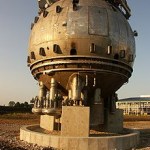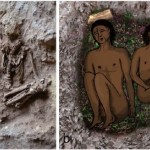Lab equipment
Here are some more unsung heroes of research: scanners (the human kind). In the 1950s, Donald Glaser invented the bubble chamber – a way to track infinitesimally small quantum particles as they winked in and out of existence. The idea – which may or may not have been tested in beer – was to create a large chamber of liquid under pressure next to a particle accelerator. As the beams hit their target, producing sprays of new types of short-lived particles, these energetic particles would leave tracks of bubbles in the liquid (usually hydrogen). Everything was caught on arrays of special high-…
Last month we reported on the first people who, around twelve thousand years ago, were lining their loved ones’ graves with flowers. This month, we have a piece on the “extinct” frog that was “resurrected” and then discovered to be a living fossil.
Both of these studies were led by Israeli researchers from other institutions. The Weizmann contributions were what you might call technical: precise radiocarbon dating and x-ray micro-tomography. While the findings, themselves, were publicized in many scientific and popular publications, the technological advances that make these findings possible…
Over at Confused at a Higher Level, Melissa offers an alphabetical list of essential supplies for a condensed matter experimentalist at a small college. This is a fun idea for back-to-school time, so I'll steal it, and offer the following alphabetical list of essentials for Atomic, Molecular, and Optical physics at a small college, kind of a condensed version of the three part series I did a few weeks ago.
A is for Acousto-optic modulator This is a device that uses sound waves in a crystal to deflect light and shift its frequency. It's essential for rapid control of laser properties.
B is for…

